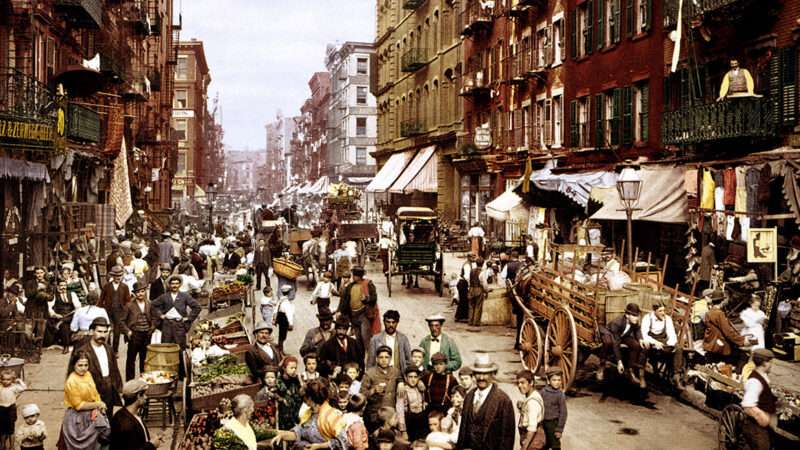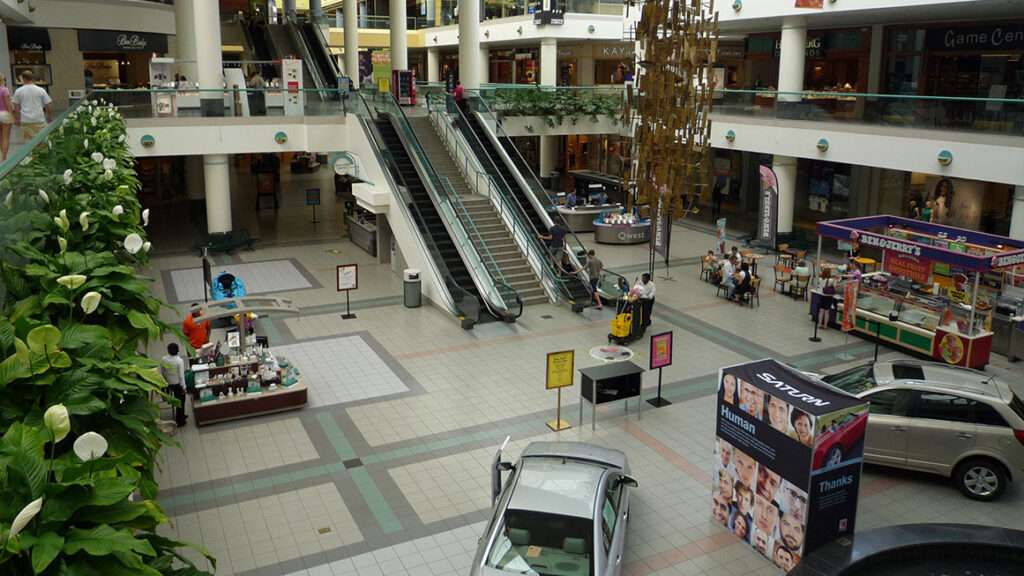
Across North America, local boosters are whisking visitors off to places like Detroit's beloved Eastern Market or Milwaukee's Public Market. An eager local guide will take them to Portland's food truck corrals or Vancouver's Granville Island. A more reluctant host may let them tag along for a Spam musubi lunch at Honolulu's Maunakea Marketplace or to pick through mid-century modern furniture at the Rose Bowl Flea Market in Pasadena, California.
Midway through a cross-country trip, the monotony of my hosts' ideas for how best to spend a day in their city started to wear on me. Yes, yes, your city has a great food hall, a great farmer's market, a great peddlers mall—as does every other city. But then it dawned on me that this is as it should be. Marketplaces are urban spaces par excellence, places that allow us to relish in the hustle, to see and be seen by strangers, to enjoy, as Pericles put it, all the good things of this Earth that flow into the city.
Adam Smith understood this when he suggested that man has a natural "propensity to truck, barter, and exchange." Smith was trying to explain why markets tend to emerge wherever more than one human being can be found. We don't spend our free time rifling through yard sales, haggling over prices, or promenading in malls because we have to—we do it because it's inherent to who we are.
Defying an Unkind Narrative
Today, the term market can refer to almost any aspect of human life. There are dating markets and commodity markets, emerging markets and futures markets. Most markets are, by now, almost entirely abstract, best represented by numbers and line charts. But ask a child to draw a market, and she will probably doodle a bunch of people manning stalls, hawking goods they've grown, made, or collected.
Literature hasn't always been kind to markets, or marketplaces. In Thomas More's Utopia, the namesake of the genre, markets are altogether absent, with goods mechanically administered from a warehouse on the basis of need. In Walden Two, a more recent technocratic utopia envisioned by psychologist B.F. Skinner, trade among residents is banned—for their own good, of course. One suspects that neither More nor Skinner ever felt the thrill of hunting for a collectible or the rush of negotiating down a price.
Video games tell a different story. In Animal Crossing: New Horizons, the player spends all her time befriending shopkeepers and scouring shops for furniture and clothing. Log into any massively multiplayer online role-playing game, like Old School RuneScape or World of Warcraft, and you'll find most players crammed into some central location in the game's main city, which the players—perhaps without any planning by the developers—have turned into a market.
If revealed preference counts for anything, perhaps saving the world isn't quite so fun as being a butcher, a brewer, or a baker.
Marketphobia
Back in the physical world, this indelible urge to truck, barter, and exchange forms the basis of cities. As the urban planner Alain Bertaud has argued, people principally gather to exchange goods, labor, and ideas. This is why cities follow a near-universal pattern of densities peaking around a central business district and declining outward. It's also why dedicated marketplaces are a near-universal urban design feature, from New York City's Times Square to Mexico City's Zócalo to Istanbul's Grand Bazaar.
It's ironic, then, that contemporary Anglo-American urban planning is almost completely defined by a phobia of markets.
The streets and sidewalks of American cities were once sites of spontaneous, unplanned marketplaces. As captured by the iconic 1900 photo of New York City's Mulberry Street in Little Italy, peddlers with pushcarts once set up shop along busy streets selling everything from peanuts to watches—an accessible kind of entrepreneurship that naturally appealed to immigrants. Any public space could turn into a marketplace, if the conditions were right.
This kind of informal market activity was stamped out by corralling sellers into discrete districts, mandating expensive licenses, or banning vendors altogether. Similar fights are underway in cities in regions across the developing world, where a quixotic quest for visual order and a reorientation of the urban public realm around the car has led to similar anti-vendor efforts in Latin America and Southeast Asia.
Likewise, markets once blended naturally into almost every neighborhood, even residential areas. As a trip to New York City's Tenement Museum reveals, the strict distinction between home and work is an entirely modern invention; historically, front parlors doubled as offices, workshops, restaurants. The same is true of neighborhoods: Even the most humdrum residential neighborhood was once served by corner groceries, barbershops, and bars.
Zoning's role in perpetuating the housing affordability crisis is well known. But equally pernicious has been the way zoning has excised markets from daily life. This is by design: Early 20th century Anglo-American elites saw the mere presence of market activity as corrupting. Such prejudices turned into zoning codes that strictly segregated land uses, producing a monoculture landscape of strip malls and subdivisions.
In pre-zoning neighborhoods in cities like Washington, D.C., one can still find the remnants of a lost world of neighborhood commerce, if you know where to look.
Shopkeepers Win
Markets find a way. Merely a decade into the project of planning suburbia, the need for some kind of public commercial realm became obvious, giving rise to the first shopping malls. The insatiable urge to monger meant that peddlers malls and flea markets survived in warehouses and parking lots. On any given Saturday in spring, lawns bloom with old books and clothes, as sleepy cul-de-sacs blossom into yard sale marketplaces. Farmers markets and food halls are now, in most cities, a definitive "thing" you must do.
In an age of two-day Amazon delivery, overpriced takeout food, and curbside groceries, we don't ever need to set foot in marketplaces. And yet, it's the first thing that many of us do the moment we have any free time. We try on clothes and examine wall-to-wall televisions that we know we could never afford. We compare prices, check for quality, and tactfully negotiate with clerks. We argue over which smell leads to the better lunch, and sit at the counter with stuffed bellies watching strangers go by.
We do this because it's fun—and not just for the consumer. In an apocryphal quote, Napoleon Bonaparte once disparaged England as a "nation of shopkeepers." But there is inherent dignity in entrepreneurship, a pride in being one's own boss, in mastering a craft, in serving a quality product that makes up for long hours and low pay.
The shopkeepers won, by the way.
Spontaneous Markets
Markets are forever sprouting anew. Down the street from my Los Angeles apartment, an emergent food hall forms at the intersection of two boulevards each evening. A churro vendor sets up shop first, followed by pupuseria. A fruit cart may join, and a Japanese food truck often follows. A taqueria sets up next to the bus shelter, serving tacos al pastor to evening commuters well past midnight.
I doubt anyone involved has ever read Wealth of Nations. But I suspect they could speak to Smith's posited propensity with greater clarity than many economists.
The post Butchers, Brewers, and Bakers Still Thrive in Urban Marketplaces appeared first on Reason.com.








